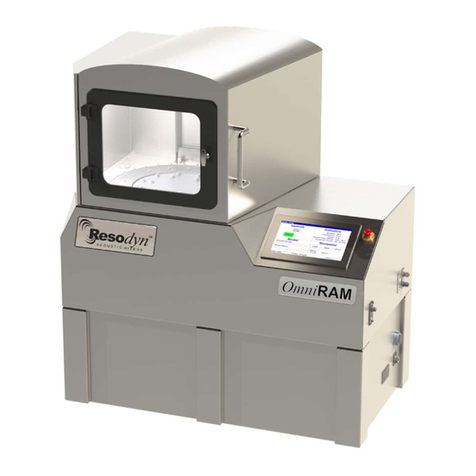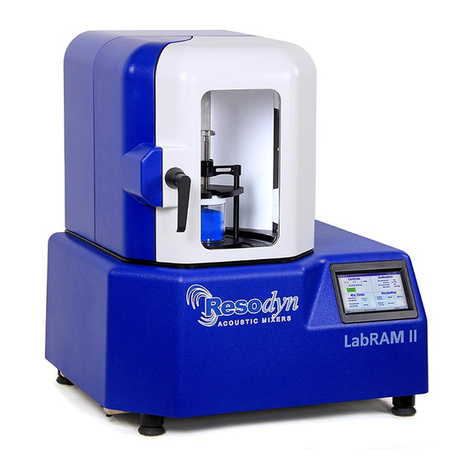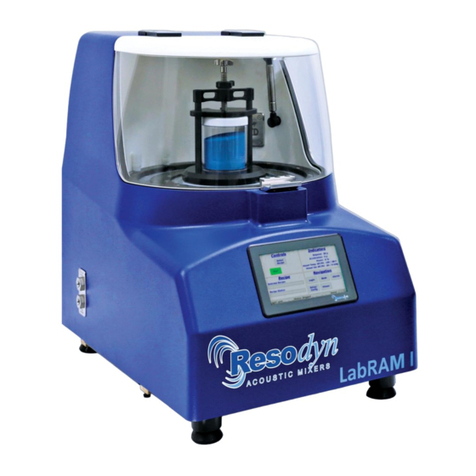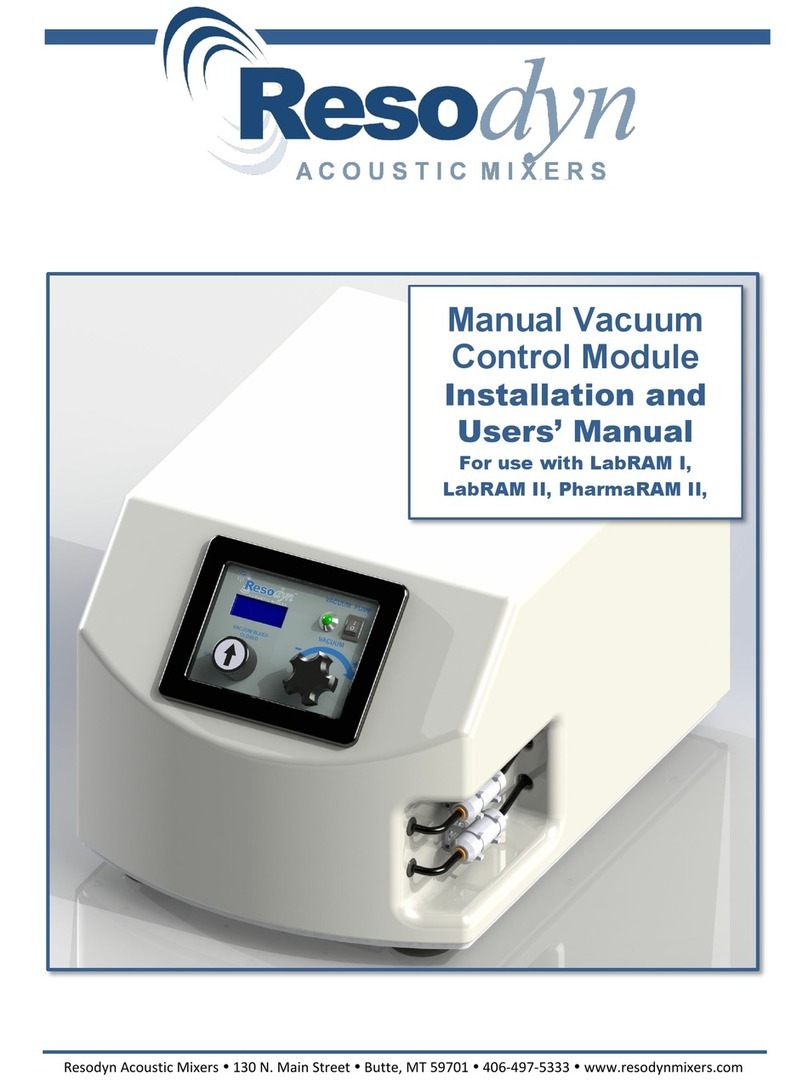
2
Resodyn Acoustic Mixers Rev 062520
7.3 Login...........................................................................................................................31
7.4 Select the Recipe........................................................................................................32
7.5 Run the Recipe ...........................................................................................................33
7.6 Completion .................................................................................................................33
8HMI (Human Machine Interface) – Overview .................................................................34
8.1 Main Screen................................................................................................................34
8.2 Login...........................................................................................................................35
8.3 Alarming .....................................................................................................................35
8.4 Setup and Configuration Screens ...............................................................................35
8.5 Viewer.........................................................................................................................35
9HMI Operation – Security and Login..............................................................................36
9.1 Login Levels and Privileges ........................................................................................36
9.2Screen Operations - Logging In/Out............................................................................36
9.3 Log Files .....................................................................................................................37
10 HMI Operation – Modes of Operation ............................................................................38
10.1 Screen Operations - Recipe Mode ..............................................................................38
Screen Operations - Auto Mode ............................................................................................41
11 HMI Operation – Alarming .............................................................................................45
11.1 Screen Operations - Alarms........................................................................................45
12 HMI Operation – Viewer ................................................................................................47
12.1 Screen Operations - Viewer ........................................................................................47
13 HMI Operation – Setup and Configuration .....................................................................48
13.1 Status Tab ..................................................................................................................50
13.2 Calibration Tab ...........................................................................................................50
13.3 Recipe Tab .................................................................................................................50
13.4 Setup1 Tab .................................................................................................................58
13.5 Setup2 Tab .................................................................................................................59
13.6 Setting Date and Time ................................................................................................61
13.7 Config Tab ..................................................................................................................61
Data Tab ...............................................................................................................................65
14 Care and Maintenance ..................................................................................................66
14.1 Preventive Maintenance .............................................................................................66
14.2 Cleaning Procedures ..................................................................................................66
14.3 Accelerometer Calibration...........................................................................................66
14.4 Maintenance ...............................................................................................................66
14.5 Replacement of Serviceable Parts ..............................................................................67
15 Troubleshooting and Service .........................................................................................71
Appendices A Electrical Installation.......................................................................................... A
Appendices B Component Arrangement ..................................................................................G

































